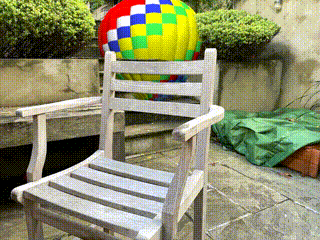Virtual Occlusions Through Implicit Depth
For augmented reality (AR), it is important that virtual assets appear to `sit among' real world objects. The virtual element should variously occlude and be occluded by real matter, based on a plausible depth ordering. This occlusion should be consistent over time as the viewer's camera moves. Unfortunately, small mistakes in the estimated scene depth can ruin the downstream occlusion mask, and thereby the AR illusion. Especially in real-time settings, depths inferred near boundaries or across time can be inconsistent. In this paper, we challenge the need for depth-regression as an intermediate step. We instead propose an implicit model for depth and use that to predict the occlusion mask directly. The inputs to our network are one or more color images, plus the known depths of any virtual geometry. We show how our occlusion predictions are more accurate and more temporally stable than predictions derived from traditional depth-estimation models. We obtain state-of-the-art occlusion results on the challenging ScanNetv2 dataset and superior qualitative results on real scenes.
PDF Abstract CVPR 2023 PDF CVPR 2023 Abstract


 Hypersim
Hypersim